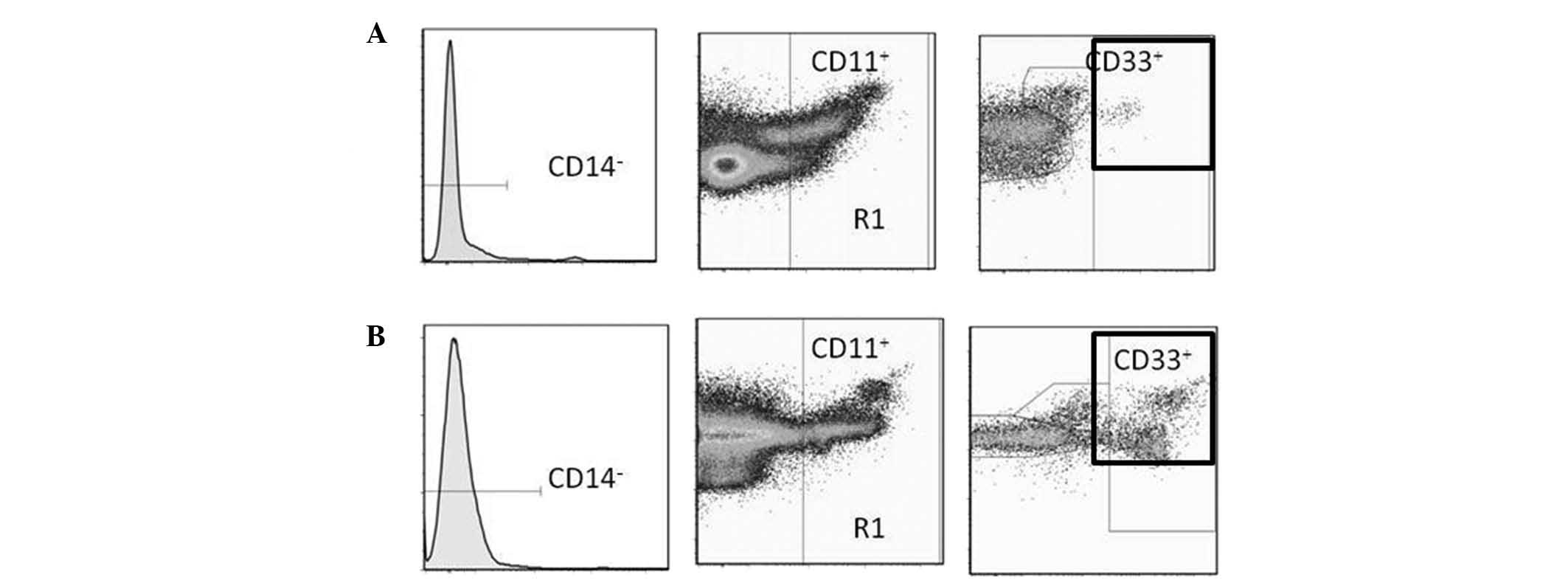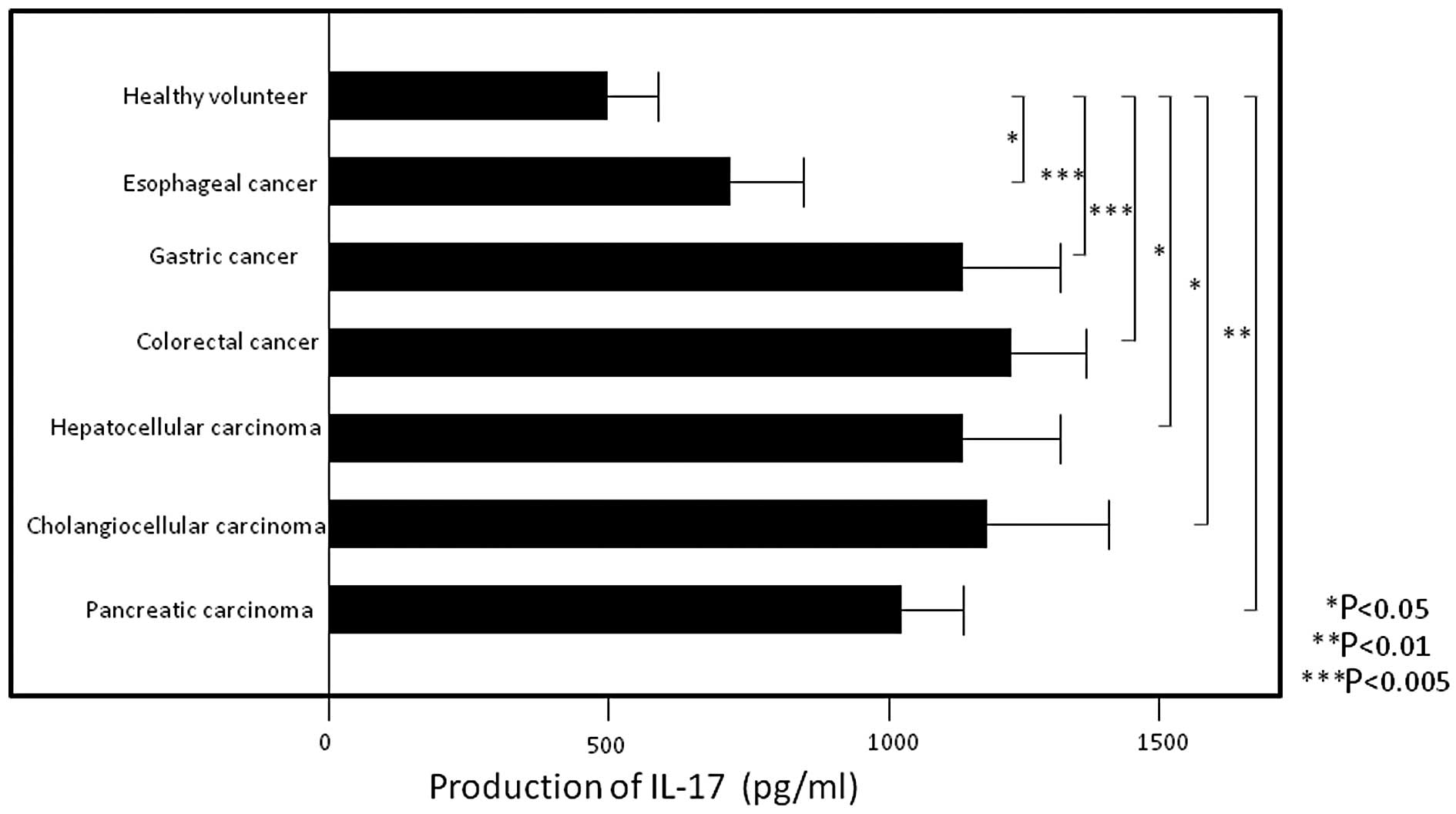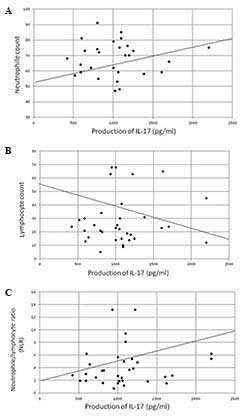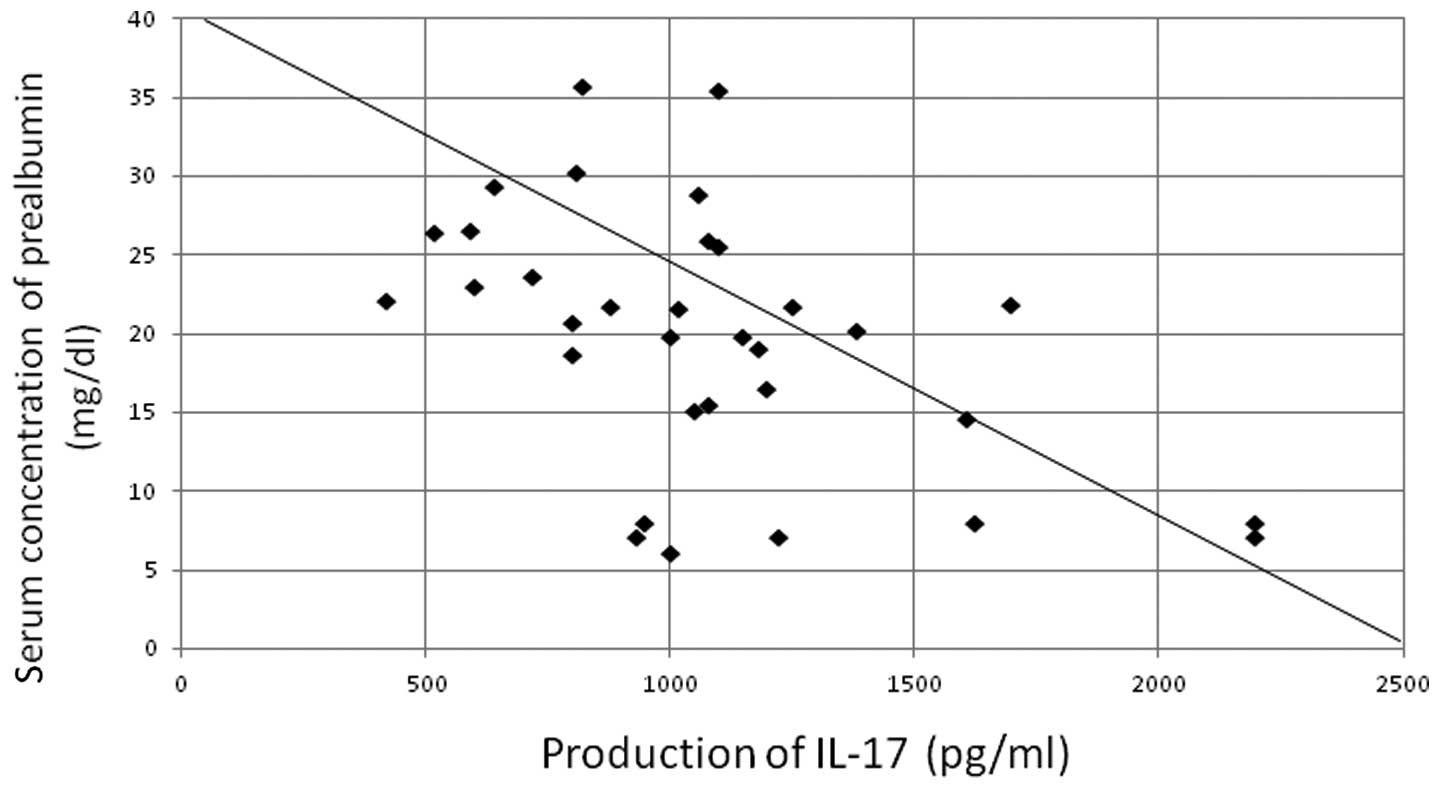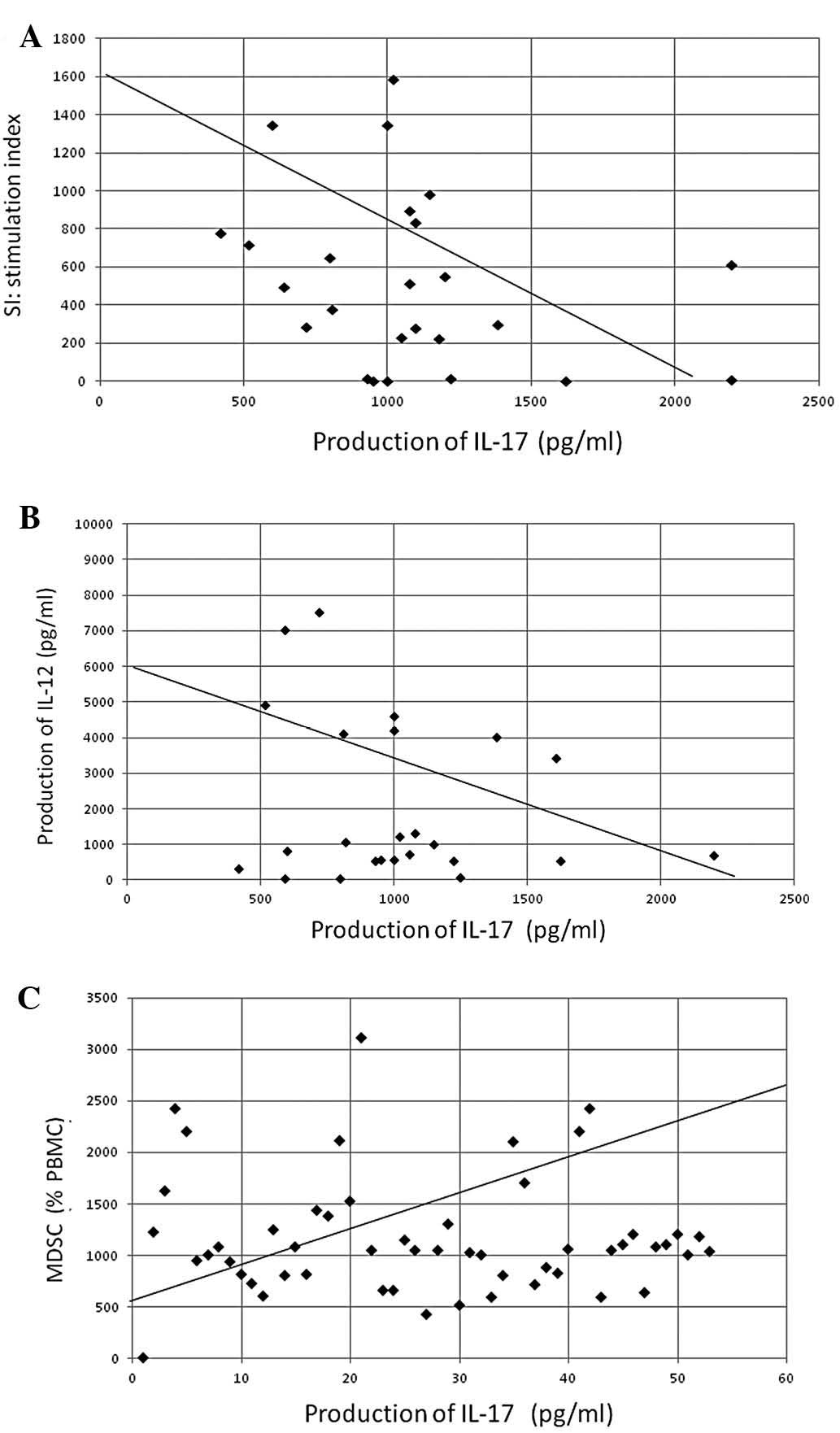Increased IL‑17 production correlates with immunosuppression involving myeloid-derived suppressor cells and nutritional impairment in patients with various gastrointestinal cancers
- Authors:
- Published online on: May 27, 2013 https://doi.org/10.3892/mco.2013.134
- Pages: 675-679
Metrics: Total
Views: 0 (Spandidos Publications: | PMC Statistics: )
Total PDF Downloads: 0 (Spandidos Publications: | PMC Statistics: )
Abstract
Although a causal relationship between inflammation and innate immunity of cancer is more widely accepted today, many of the precise cell mechanisms mediating this relationship have not been elucidated. Th17 cells, which produce the proinflammatory cytokine interleukin 17 (IL‑17), have been recognized as one of the key factors in the regulation of inflammatory bowel disease and rheumatoid arthritis. This study demonstrated that, in patients with various types of gastrointestinal cancer, IL‑17 production was correlated with myeloid‑derived suppressor cell (MDSC) levels and with markers for nutritional impairment, immune suppression and chronic inflammation. IL‑17 was significantly higher in patients with various types of gastrointestinal cancer compared to normal volunteers. In addition, IL‑17 levels were significantly correlated with neutrophil counts and the neutrophil̸lymphocyte ratio (NLR) and significantly inversely correlated with cell‑mediated immune response indicators [lymphocyte phytohemagglutinin (PHA)‑blastogenesis and IL‑12 induction] and patient nutritional status (prealbumin levels). Circulating MDSC levels were significantly correlated with IL‑17 production. These results suggest that, in human gastrointestinal cancers, chronic inflammation involving IL‑17 may be an important mechanism contributing to disease progression through enhancement of immune suppression or cachexia. Controlling the activation of Th17 cells may prove to be a valuable strategy for the treatment of gastrointestinal cancer patients.



